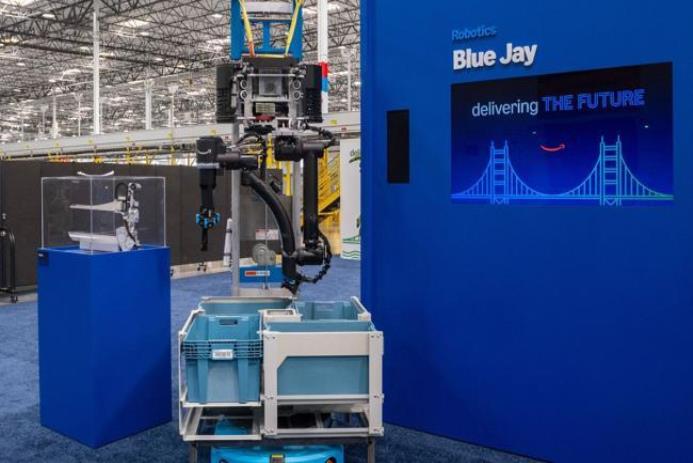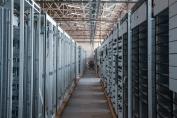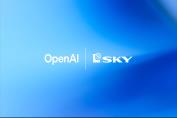
How Amazon Uses AI to Build Smarter Warehouse Robots — What It Means for Jobs
- 04 November, 2025
How Amazon is Using AI to Make Robots Better Warehouse Workers
Amazon is quietly running what looks like half an industrial revolution and half a software sprint across its warehouses. From where I sit, the last year feels less like a single breakthrough and more like a series of small, well-placed nudges: smarter perception models, tactile sensors where there were none, and engineering teams obsessed with shaving milliseconds off each pick. The most interesting demos — a nimble arm called Blue Jay and tactile platforms like Vulcan — aren’t about showy robotics. They’re about collapsing the development loop and reducing latency in everyday fulfillment work. That matters, because in warehouses latency is invisible gold.
What are Blue Jay and Vulcan?
Blue Jay tries to be a do-everything arm at a single station: pick, sort, consolidate. Imagine a Swiss Army knife for picking tasks that swaps tools and trajectories depending on the object. Meanwhile Vulcan brings touch into the stack — real tactile feedback — and that, in my experience watching similar systems, changes the game for soft, oddly shaped, or partially hidden items. You stop guessing and start feeling. Which is huge.
Under the hood these platforms are layers of perception, sensor fusion, motion planning, and continuous learning. Computer vision spots and localizes. Sensors give context. Motion planners sequence safe moves. Telemetry and online learning tune behavior over time. Not sorcery. Just lots of models running at the edge and pragmatic engineering to keep things working across millions of cycles.
Why AI matters in warehouse robotics
AI isn’t a feature; it’s the differentiator. It shortens the loop from idea to deployed behavior — you prototype moves in sim, iterate on the real arm, and ship faster than the old hardware-first cadence allowed. It also raises what robots can even attempt. With better vision and fusion, robots find items in messy bins, deal with occlusions, and don’t choke at the first awkward box. Add ML-driven control and arms adjust grip and trajectory on the fly, so you get fewer dropped mugs and fewer customer returns. And yes — when the data plumbing and safeguards are right, reinforcement learning and telemetry mean the whole fleet improves the longer it runs. But only if you’ve built the scaffolding to collect and curate data. Otherwise you just have fancy logs.
Will this lead to fewer human jobs?
Amazon’s line is familiar: automation augments humans and opens new roles. That’s a true slice of the story. But independent reporting paints a more textured picture. The New York Times estimated automation could let Amazon avoid hiring up to 160,000 workers over two years even as demand climbs. I’ve watched distribution centers change. The reality, honestly, sits somewhere between the cheerleading and the alarmism.
Automation removes repetitive, physically punishing tasks and nudges people toward supervision, maintenance, programming, and quality oversight. That sounds like progress; and sometimes it is — higher-skill work, fewer injuries. But it’s a conditional win. It only becomes a real benefit when companies fund meaningful retraining and when those new roles are actually accessible to the people who’ve worked the lines. Otherwise the transition breaks communities: hours cut, livelihoods disrupted. That’s the part policy needs to engage with; corporate statements won’t fix it on their own.
Real-world example: a hypothetical distribution center
Picture a mid-sized center handling 30,000 items a day. Before automation, maybe 200 pick-and-pack associates are on the floor during peaks. Add AI-powered picking and sorting and you could realistically cut manual picks by somewhere between 40 and 60 percent — SKU mix and layout will swing that number. Does that mean 40–60 percent of people vanish? Not exactly. Robots create demand for technicians, data engineers, and process folks. The net headcount could fall, hold steady, or even rise if productivity drives growth. The real question most firms gloss over is: where does the productivity dividend go? Reinvest it into workforce development, or pocket the margin? Big difference. Huge, actually.
Benefits and trade-offs — a less tidy view
The upside is obvious: faster throughput, fewer mistakes, better ergonomics — think far fewer repetitive-lift injuries — and the ability to run steady operations day and night. But there’s a cost. The capital and maintenance budgets grow. You need new skills in the region or you need to bring them in. And routine roles that sustained local economies may shrink. It’s not doom, but it’s disruptive. If you care about communities, this is the fork you can’t ignore.
What companies and policymakers should actually do
If we want automation that doesn’t hollow out communities, pragmatic steps matter. Invest in reskilling that’s not just cursory workshops but certified, on-the-job apprenticeships with real career ladders. Design transition pathways: wage supports while people retrain, targeted apprenticeships, and clear internal mobility so frontline staff can realistically move into the jobs being created. And for the love of planning, publish workforce impact data. Communities can’t prepare for change if companies keep the numbers private. Transparency forces accountability.
Where to learn more
If you want to dig deeper beyond headlines, follow reputable reporting and academic work. The New York Times has been tracking the hiring versus automation story. Labor economists publish papers that cut through the noise and show longer-term patterns. Read both the journalism and the studies. The details matter more than the soundbites. Curious readers can start with our guide to AI News & Trends for broader context on compute, chips, and the infrastructure that underpins these systems.
Key takeaways
Bottom line: AI is speeding robotics innovation and changing what’s possible on the warehouse floor. Expect fewer repetitive picks and more technical oversight roles — but the transition can be rocky if companies don’t invest in people. Policy choices matter here; reskilling, transparency, and deliberate pathways are what separate humane automation from disruptive change. I’ve seen both outcomes. Some firms reinvest productivity into safer work and real career ladders. Others capture efficiency without a plan for displaced workers. Both are real. Both are consequential. Watch this space closely — it will shape local economies for years.
Sources: reporting from The New York Times; public statements and interviews with Amazon Robotics leadership; industry observation and firsthand visits to fulfillment operations.







